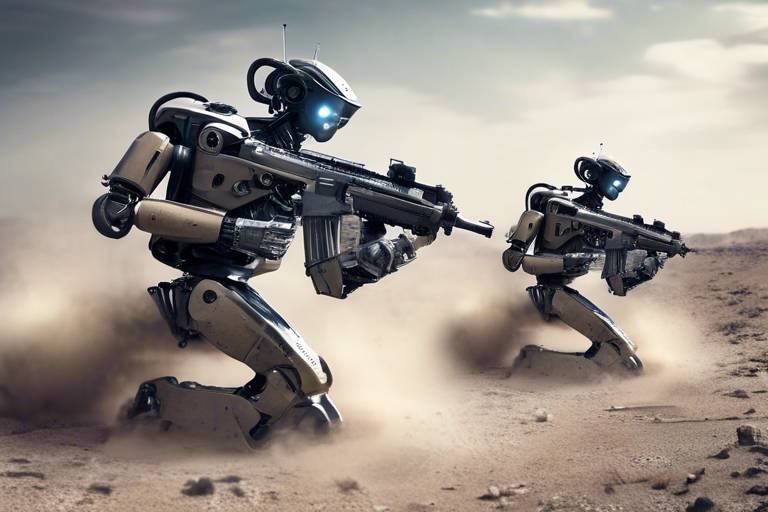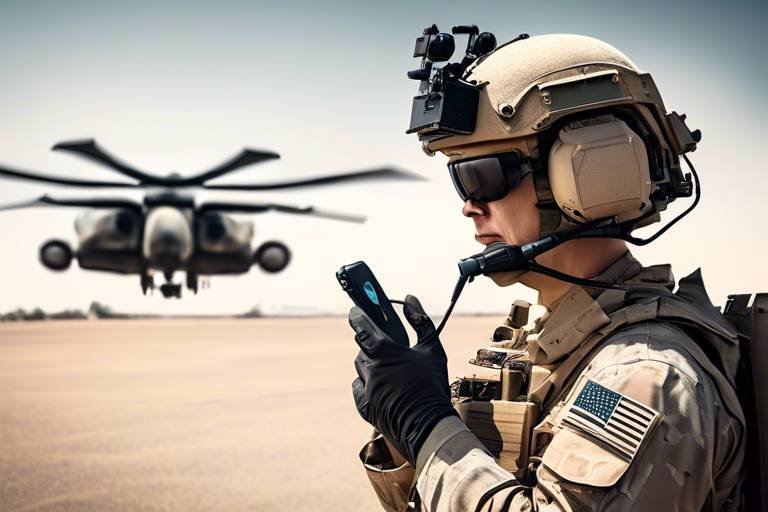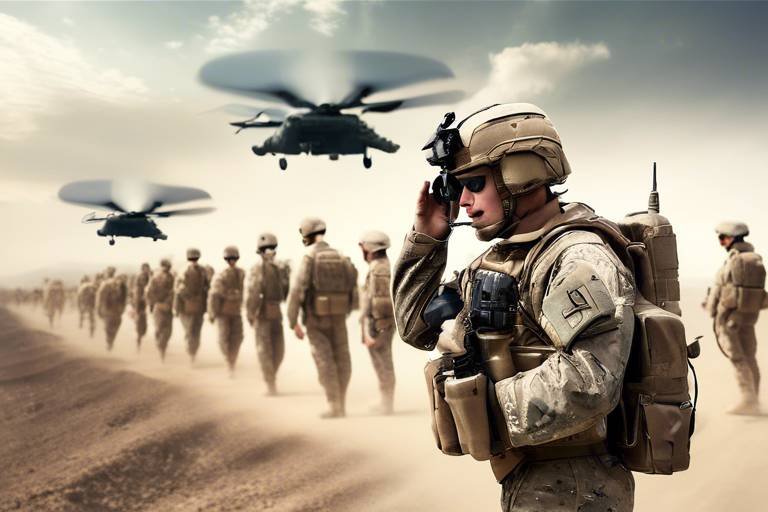How AI is Transforming Military Reconnaissance Tactics
In today’s fast-paced world, the battlefield is evolving at an unprecedented rate, and artificial intelligence (AI) is at the forefront of this transformation. Military reconnaissance, a critical component of modern warfare, is experiencing a revolutionary shift thanks to AI technologies. Imagine a world where vast amounts of data are processed in the blink of an eye, where threats are identified before they even materialize, and where military personnel can make informed decisions faster than ever before. This is not science fiction; it’s the reality brought about by AI.
AI enhances every stage of reconnaissance—from data collection to analysis, and even operational execution. The integration of AI in military tactics means that commanders can now leverage sophisticated algorithms to sift through mountains of information, pinpointing key insights that were previously buried under layers of data. This not only improves operational efficiency but also saves valuable time, allowing military forces to respond to threats swiftly and effectively.
As we dive deeper into this topic, we will explore how AI is revolutionizing military reconnaissance through various innovative applications. From advanced image recognition technologies to the deployment of autonomous drones, the landscape of reconnaissance is changing dramatically. So, buckle up as we embark on this journey to understand how AI is reshaping the future of military tactics.
AI enhances data collection methods by automating the gathering of intelligence from various sources, improving accuracy and speed, and enabling military personnel to make informed decisions quickly.
Advanced image recognition algorithms powered by AI allow for the rapid analysis of aerial and satellite imagery, identifying potential threats and targets with unprecedented precision and efficiency.
Utilizing predictive analytics, AI systems can forecast enemy movements and behaviors, enabling military strategists to anticipate actions and deploy resources more effectively in real-time scenarios.
Autonomous drones equipped with AI capabilities are revolutionizing reconnaissance missions, conducting surveillance without direct human control and providing real-time data to ground forces in hostile environments.
AI-driven tools enhance situational awareness for military personnel by processing vast amounts of data, offering insights that help commanders make strategic decisions during operations.
Despite its advantages, the integration of AI in military reconnaissance faces challenges, including ethical concerns, data privacy issues, and the need for robust cybersecurity measures.
AI plays a crucial role in counterintelligence by analyzing patterns and detecting anomalies, helping military forces identify and neutralize potential espionage threats more effectively.
As technology continues to evolve, future trends in military AI reconnaissance may include enhanced collaboration between human and machine intelligence, leading to more sophisticated and efficient reconnaissance operations.
Examining real-world case studies where AI has been successfully implemented in military reconnaissance provides valuable insights into its effectiveness and the potential for future applications in warfare.
- What is military reconnaissance?
Military reconnaissance refers to the mission of obtaining information about an enemy or potential enemy, or about the area of operations. - How does AI improve reconnaissance?
AI improves reconnaissance by automating data collection, enhancing image recognition, and providing predictive analytics for better decision-making. - What are autonomous drones?
Autonomous drones are unmanned aerial vehicles that can operate without direct human control, often equipped with AI to perform reconnaissance missions. - What challenges does AI face in military applications?
Challenges include ethical concerns, data privacy issues, and the need for robust cybersecurity to protect sensitive information. - What is the future of AI in military reconnaissance?
The future may see greater collaboration between human intelligence and AI, leading to more efficient and effective reconnaissance operations.
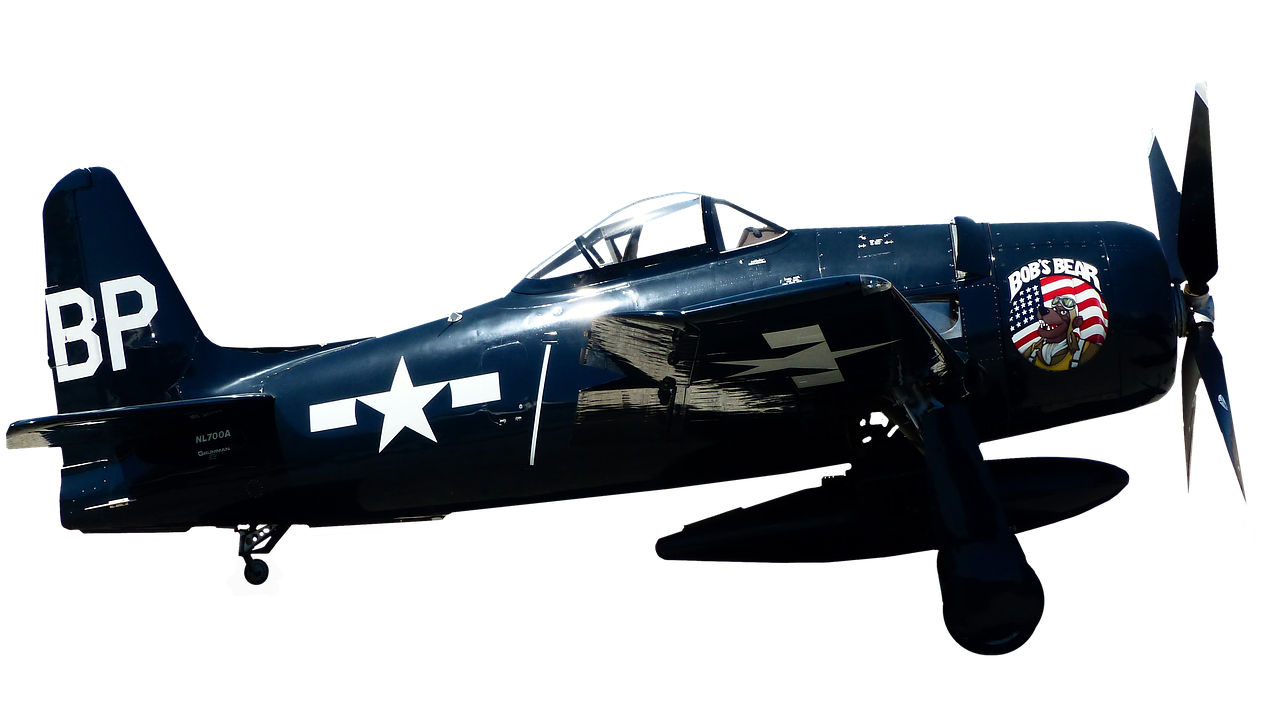
The Role of AI in Data Collection
Artificial Intelligence (AI) is reshaping the landscape of military reconnaissance, particularly in the realm of data collection. Gone are the days when intelligence gathering relied solely on human effort and traditional methods. Today, AI enhances data collection methods by automating the gathering of intelligence from various sources, which significantly improves both accuracy and speed. Imagine a world where military personnel can instantly access a wealth of information at their fingertips, allowing them to make informed decisions in the blink of an eye. This is not just a futuristic dream; it's the reality brought forth by AI technologies.
One of the most significant advancements in data collection is the ability of AI systems to process vast amounts of information from diverse sources, including satellite imagery, social media, and even intercepted communications. By leveraging machine learning algorithms, these systems can identify patterns and trends that might go unnoticed by human analysts. For instance, AI can sift through thousands of images to find specific objects or anomalies, drastically reducing the time required for analysis. This capability not only enhances operational efficiency but also ensures that military personnel are equipped with the most relevant intelligence.
Moreover, AI-driven tools can integrate data from various platforms, creating a comprehensive picture of the battlefield. This integration allows for real-time updates, which are crucial in dynamic military environments. With the ability to aggregate and analyze data from multiple sources, commanders can gain insights that help them make strategic decisions during operations. Imagine a scenario where a military unit is deployed in a foreign territory; AI can provide real-time intelligence on enemy movements, geographical challenges, and even local sentiments, all of which are vital for mission success.
However, the role of AI in data collection is not without its challenges. As with any technology, there are concerns regarding data privacy and the ethical implications of using AI in military operations. The balance between leveraging advanced technologies for security and respecting individual privacy rights is a contentious issue that military leaders must navigate carefully. Additionally, the reliance on AI systems raises questions about the potential for biases in data interpretation, which could lead to misinformed decisions if not addressed properly.
In summary, the role of AI in data collection is transforming military reconnaissance into a more efficient and effective operation. By automating processes, enhancing data integration, and providing real-time insights, AI empowers military personnel to act swiftly and decisively. As we continue to explore the capabilities of AI, it is essential to address the accompanying challenges to ensure that these technologies serve their intended purpose without compromising ethical standards.
- How does AI improve data collection in military reconnaissance?
AI automates the gathering and analysis of data from various sources, improving speed and accuracy in intelligence operations.
- What are the ethical concerns associated with AI in military data collection?
Concerns include data privacy issues and the potential for biases in data interpretation, which could lead to misinformed decisions.
- Can AI systems integrate data from multiple platforms?
Yes, AI systems can aggregate and analyze data from various sources, providing a comprehensive view of the battlefield.
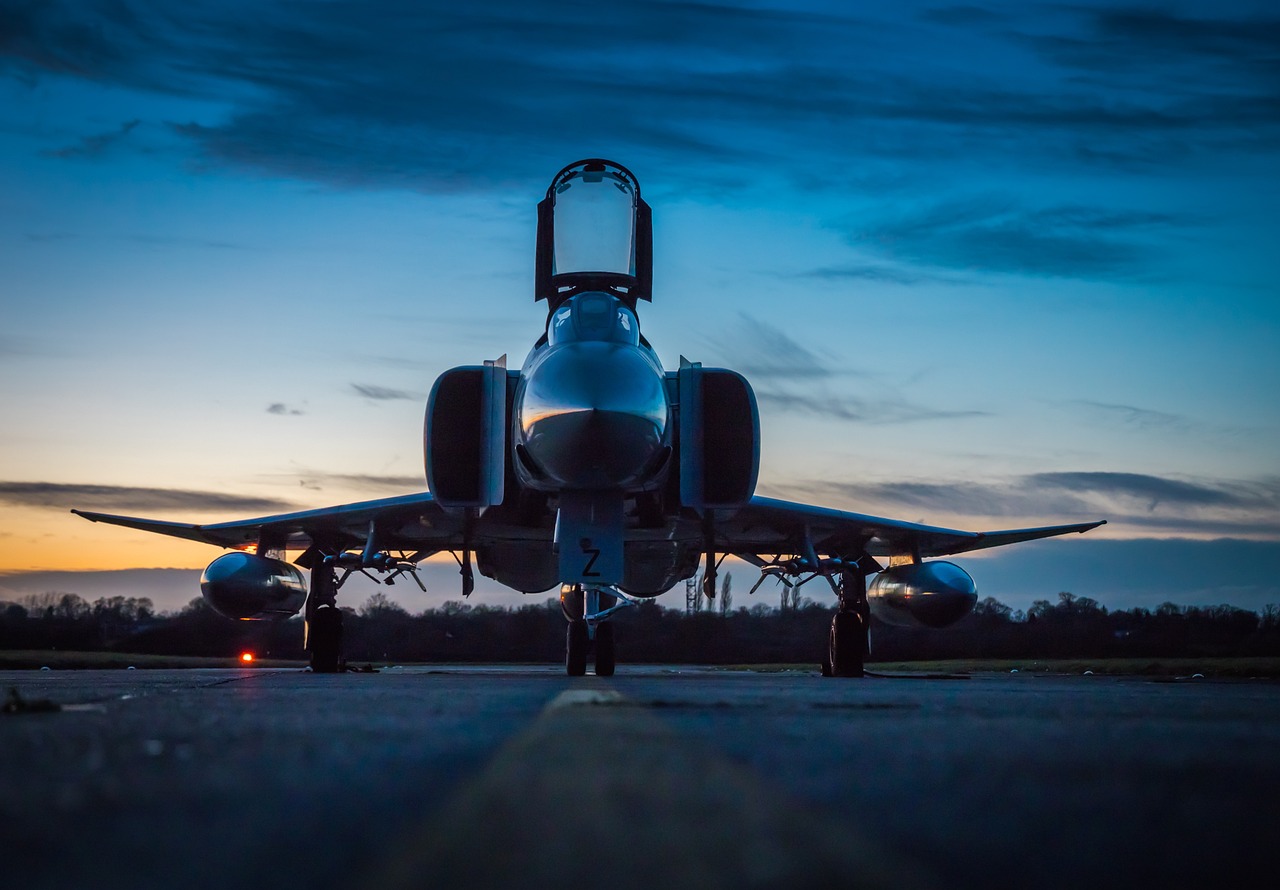
Enhanced Image Recognition Technologies
In the ever-evolving landscape of military reconnaissance, powered by artificial intelligence are redefining how we perceive and respond to threats. Imagine having the ability to sift through thousands of images in mere seconds, pinpointing potential dangers that would take human analysts hours, if not days, to identify. This is not just a dream; it's a reality brought to life by AI.
At the heart of this transformation lies advanced image recognition algorithms that leverage machine learning and deep learning techniques. These algorithms are designed to analyze aerial and satellite imagery with an accuracy that is nothing short of astonishing. For instance, AI can distinguish between a civilian vehicle and a military one, or identify changes in terrain that could indicate enemy activity. This level of detail is crucial for military strategists who rely on accurate data to make split-second decisions.
One of the most exciting aspects of these technologies is their ability to learn and improve over time. As AI systems are exposed to more data, they become better at recognizing patterns and anomalies. This adaptive learning allows military forces to stay one step ahead of adversaries. For example, if a particular type of camouflage is used by enemy forces, AI can quickly learn to identify it in various conditions, whether it’s during the day or under low-light situations.
Furthermore, the integration of these technologies into reconnaissance missions has led to significant improvements in operational efficiency. Military personnel can now access real-time analysis of images, which means they can respond to threats almost instantaneously. This rapid response capability can be the difference between success and failure in critical missions. With AI handling the heavy lifting of data analysis, human analysts can focus on strategy and decision-making, leveraging their expertise where it matters most.
To illustrate the impact of enhanced image recognition technologies, consider the following table that outlines the key benefits:
| Benefit | Description |
|---|---|
| Speed | AI can analyze images in seconds, significantly reducing the time needed for reconnaissance. |
| Accuracy | Advanced algorithms improve the precision of threat detection, minimizing false positives. |
| Adaptability | AI systems learn from new data, enhancing their ability to recognize evolving threats. |
| Resource Efficiency | Automating image analysis allows human analysts to focus on strategic decision-making. |
As we look to the future, the potential applications of enhanced image recognition technologies in military reconnaissance are limitless. From identifying troop movements to tracking supply routes, the ability to analyze and interpret vast amounts of visual data will continue to play a pivotal role in shaping modern warfare strategies. Ultimately, these advancements not only enhance military capabilities but also contribute to greater situational awareness on the battlefield, ensuring that military forces are better prepared to face any challenge that comes their way.
- What are enhanced image recognition technologies?
Enhanced image recognition technologies refer to AI-powered systems that analyze and interpret visual data, such as aerial and satellite imagery, to identify potential threats with high accuracy. - How does AI improve the speed of reconnaissance missions?
AI can process and analyze images much faster than humans, allowing military personnel to receive real-time insights and make quick decisions. - Can AI adapt to new types of threats?
Yes, AI systems are designed to learn from new data, enabling them to recognize and respond to evolving threats effectively. - What are the implications of using AI in military operations?
The use of AI in military operations can lead to improved efficiency, accuracy, and situational awareness, but it also raises ethical and security concerns that need to be addressed.

Predictive Analytics in Reconnaissance
In the realm of military reconnaissance, the phrase "predictive analytics" has become a game-changer, revolutionizing how armed forces gather and interpret intelligence. Imagine having the ability to foresee enemy movements before they even happen—this is the power that AI-driven predictive analytics brings to the table. By analyzing vast amounts of data from various sources, including satellite imagery, troop movements, and historical conflict patterns, AI systems can uncover hidden trends and provide actionable insights. This capability not only enhances decision-making but also allows military strategists to stay one step ahead of potential threats.
One key aspect of predictive analytics is its ability to process real-time data. For instance, when a conflict is brewing, AI systems can evaluate data from social media, news reports, and reconnaissance missions to predict where and when an enemy might strike. This is akin to having a crystal ball that doesn’t just show the future but also provides a roadmap for navigating it. With such insights, military leaders can allocate resources more effectively, ensuring that troops are in the right place at the right time.
Furthermore, predictive analytics can enhance operational efficiency by identifying patterns in enemy behavior. For example, if an enemy force typically launches attacks on weekends or during certain weather conditions, AI can flag these tendencies, allowing commanders to prepare accordingly. By understanding these patterns, military forces can create a dynamic response strategy that adapts as the situation evolves.
However, the implementation of predictive analytics is not without its challenges. Data quality and integration remain significant hurdles. Military operations rely on accurate and timely data, and any discrepancies can lead to miscalculations. To address this, armed forces must invest in robust data collection methods and ensure that their AI systems are trained on comprehensive datasets. Moreover, ethical considerations regarding data privacy and the potential for misuse of predictive analytics must be taken into account to maintain public trust and accountability.
As we look to the future, the role of predictive analytics in military reconnaissance is poised to expand even further. Innovations in machine learning and data processing will likely lead to even more sophisticated predictive models. These advancements could enable military personnel to not only anticipate enemy actions but also simulate various scenarios, providing a comprehensive understanding of potential outcomes.
In conclusion, predictive analytics represents a significant leap forward in military reconnaissance, offering unparalleled insights that can transform operational strategies. By harnessing the power of AI, military forces can enhance their situational awareness and responsiveness, ultimately leading to more effective and efficient missions. As technology continues to evolve, the potential applications of predictive analytics in military operations will likely grow, paving the way for a new era of warfare where anticipation and adaptability are key.
- What is predictive analytics in military reconnaissance?
Predictive analytics involves using AI to analyze data and forecast enemy movements, helping military strategists anticipate actions and allocate resources effectively. - How does AI improve decision-making in military operations?
AI enhances decision-making by processing vast amounts of data quickly, providing insights that allow commanders to make informed choices in real-time. - What challenges does predictive analytics face?
Challenges include data quality, integration issues, and ethical concerns regarding privacy and potential misuse of information. - What is the future of predictive analytics in the military?
Future advancements may lead to more sophisticated predictive models that enable military forces to simulate various scenarios and improve operational strategies.
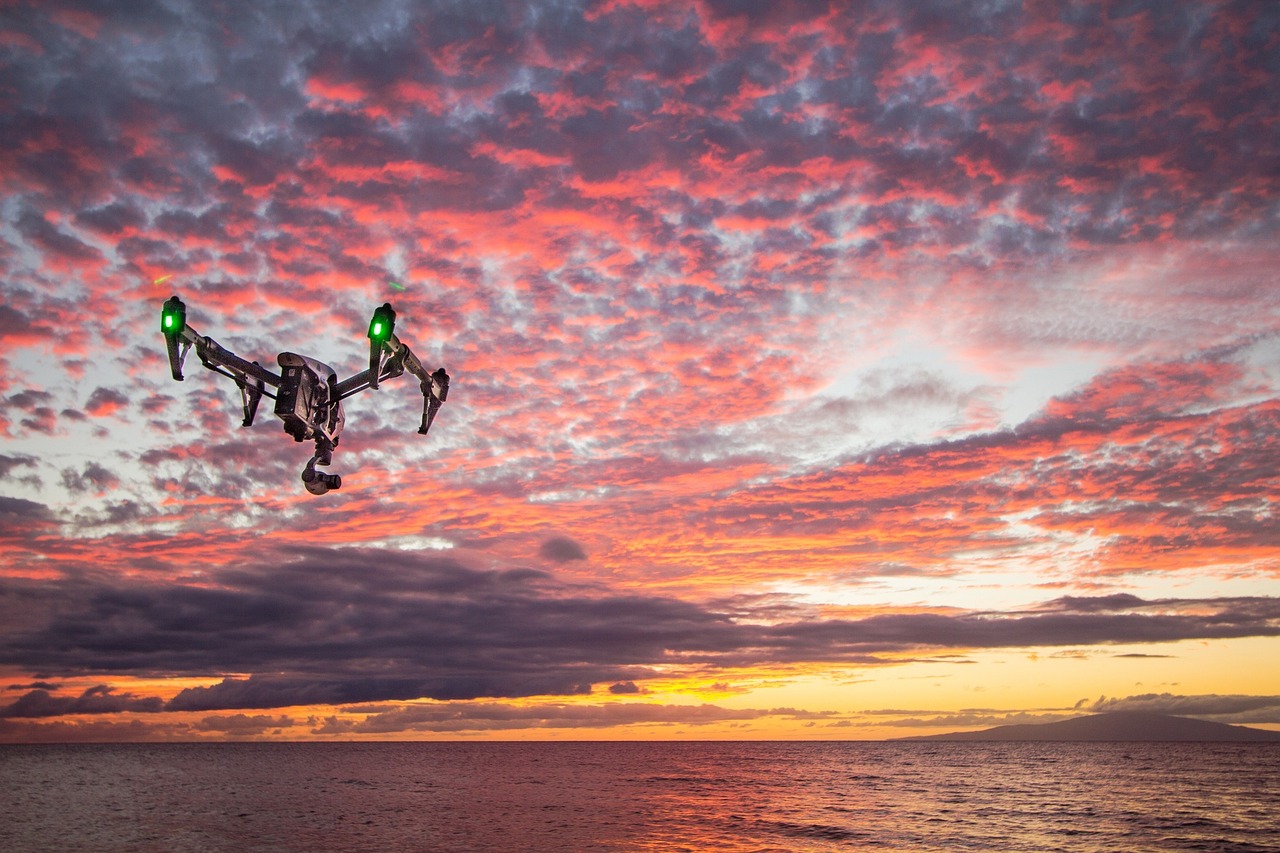
Integration of Autonomous Drones
The integration of autonomous drones into military reconnaissance has been nothing short of a game-changer. Imagine a world where eyes in the sky can operate without direct human intervention, tirelessly gathering vital intelligence while minimizing risks to personnel. These drones, equipped with advanced artificial intelligence capabilities, are designed to navigate complex environments, analyze data on-the-fly, and relay crucial information back to command centers in real-time. This leap in technology not only enhances operational efficiency but also transforms how military strategies are developed and executed.
Autonomous drones can fly missions that would be too dangerous for human pilots, such as surveillance over hostile territories or monitoring high-risk areas. By utilizing cutting-edge machine learning algorithms, these drones can learn from their surroundings, adapt to changing conditions, and even make decisions based on the data they collect. For instance, they can identify potential threats, track movements, and assess situations without waiting for human commands, which is critical in fast-paced combat scenarios.
One of the most impressive aspects of these drones is their ability to operate in swarms. Imagine a fleet of drones working together, communicating with each other to cover vast areas more efficiently than any single unit could. This collaborative approach allows for comprehensive surveillance, ensuring that no potential threat goes unnoticed. Here’s a quick overview of how autonomous drones enhance military reconnaissance:
| Feature | Benefit |
|---|---|
| Real-time Data Collection | Immediate intelligence for rapid decision-making |
| Reduced Risk to Personnel | Minimizes human exposure to danger |
| Adaptive Learning | Improves mission effectiveness over time |
| Swarms of Drones | Enhanced area coverage and threat detection |
Furthermore, the integration of autonomous drones does not just stop at reconnaissance. These flying machines can also play a pivotal role in target acquisition and battlefield assessment. By analyzing the data they gather, they can help commanders understand the battlefield landscape better, allowing for more informed strategic planning. For example, if a drone identifies an enemy position, it can relay that information to ground troops, enabling them to plan their next move effectively.
However, as with any technology, there are challenges to consider. Issues such as cybersecurity vulnerabilities, ethical considerations regarding autonomous decision-making, and the potential for misuse must be addressed. The military must ensure that these drones are secure from hacking and that their use complies with international laws and ethical standards. As we move forward, striking a balance between innovation and responsibility will be crucial in harnessing the full potential of autonomous drones in military reconnaissance.
- What are autonomous drones? Autonomous drones are unmanned aerial vehicles that can operate without direct human control, utilizing AI to navigate and perform tasks.
- How do autonomous drones enhance military reconnaissance? They provide real-time data collection, reduce risks to personnel, and improve situational awareness through advanced data analysis.
- What are the challenges associated with autonomous drones? Challenges include cybersecurity risks, ethical concerns regarding their use, and the need for robust operational protocols.
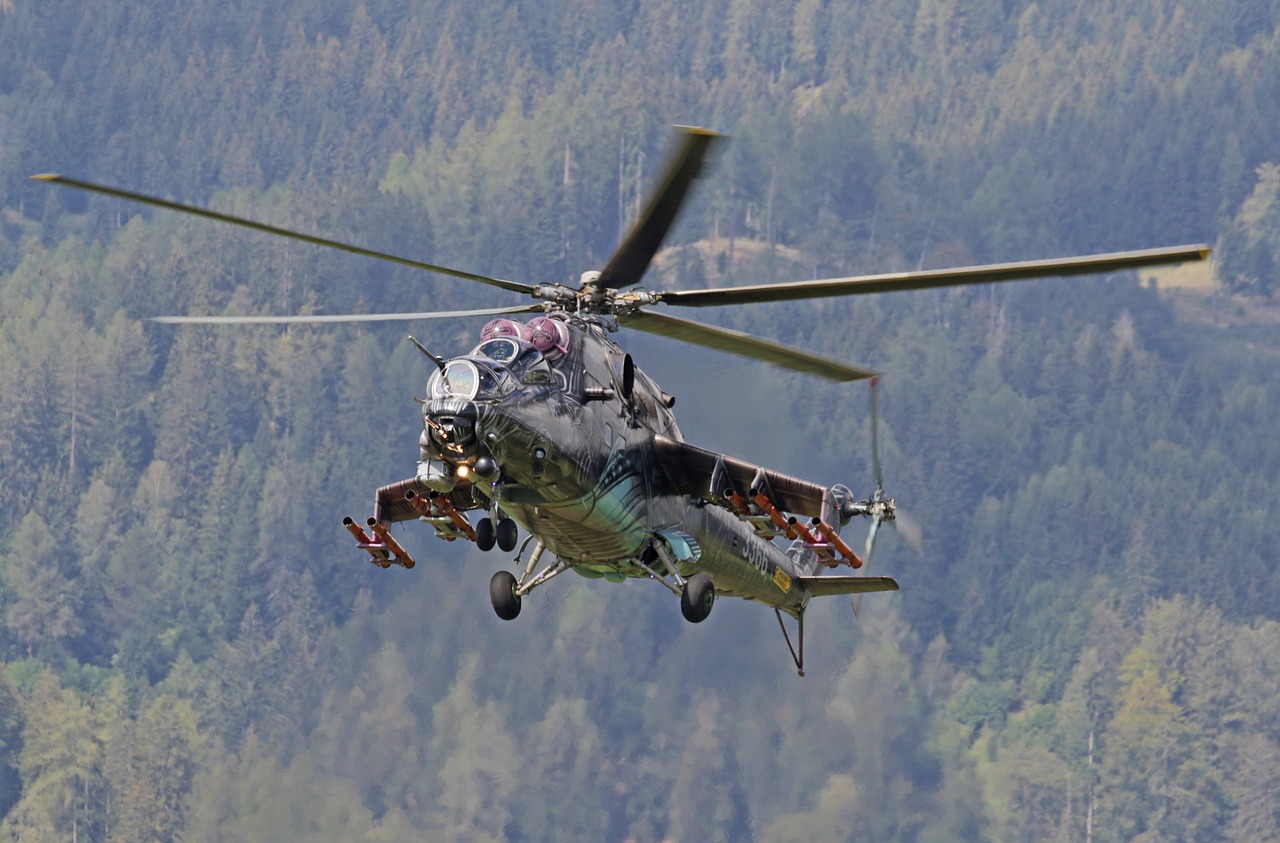
Improving Situational Awareness
In the fast-paced world of modern warfare, situational awareness is more than just a buzzword; it's a critical component that can mean the difference between mission success and failure. With the integration of artificial intelligence (AI), military personnel are now equipped with advanced tools that enhance their ability to perceive and understand their operational environment. Imagine being able to sift through mountains of data in seconds, pinpointing threats and opportunities that would otherwise go unnoticed. That's the power of AI in action!
AI-driven systems can analyze vast amounts of information from various sources, including satellite imagery, social media feeds, and even sensor data from the battlefield. This capability allows commanders to gain a more comprehensive view of the situation, enabling them to make informed decisions quickly. For instance, when troops are deployed in hostile territories, AI can process real-time data and provide insights about enemy movements, environmental conditions, and potential hazards.
One of the key features of AI-enhanced situational awareness is its ability to identify patterns and trends within the data. By employing machine learning algorithms, these systems can detect anomalies that may indicate a change in enemy behavior or an emerging threat. For example, if a particular area sees an unusual increase in communications or troop movements, AI can flag this for further investigation. This proactive approach not only saves time but also enhances the overall safety of military operations.
Moreover, the integration of AI in situational awareness tools helps streamline communication among different units. When various branches of the military can access the same data in real-time, it fosters better collaboration and coordination. Think of it as a well-orchestrated symphony where every musician knows their part and plays in harmony. This level of synchronization is crucial during high-stakes missions where every second counts.
However, it's essential to recognize that while AI significantly enhances situational awareness, it's not without its challenges. Issues such as data overload, where military personnel are inundated with too much information, can lead to confusion instead of clarity. Therefore, it is crucial to design user-friendly interfaces that present data in a digestible format. This is where human-machine collaboration becomes vital. By combining AI's analytical prowess with human intuition and experience, military forces can achieve a higher level of operational effectiveness.
In summary, the role of AI in improving situational awareness cannot be overstated. It empowers military personnel to make quicker, more informed decisions while navigating complex environments. As technology continues to evolve, we can expect even more sophisticated tools that will further enhance our understanding of the battlefield. The future of military operations is undoubtedly intertwined with the advancements in AI, paving the way for smarter, safer, and more efficient strategies.
- How does AI improve situational awareness in the military? AI enhances situational awareness by processing vast amounts of data quickly, identifying patterns, and providing real-time insights that help military personnel make informed decisions.
- What are the challenges of using AI for situational awareness? Some challenges include data overload, ethical concerns regarding data privacy, and the need for robust cybersecurity measures to protect sensitive information.
- Can AI replace human decision-making in military operations? While AI can provide valuable insights and analysis, human intuition and experience remain irreplaceable, making collaboration between AI and humans essential for effective decision-making.
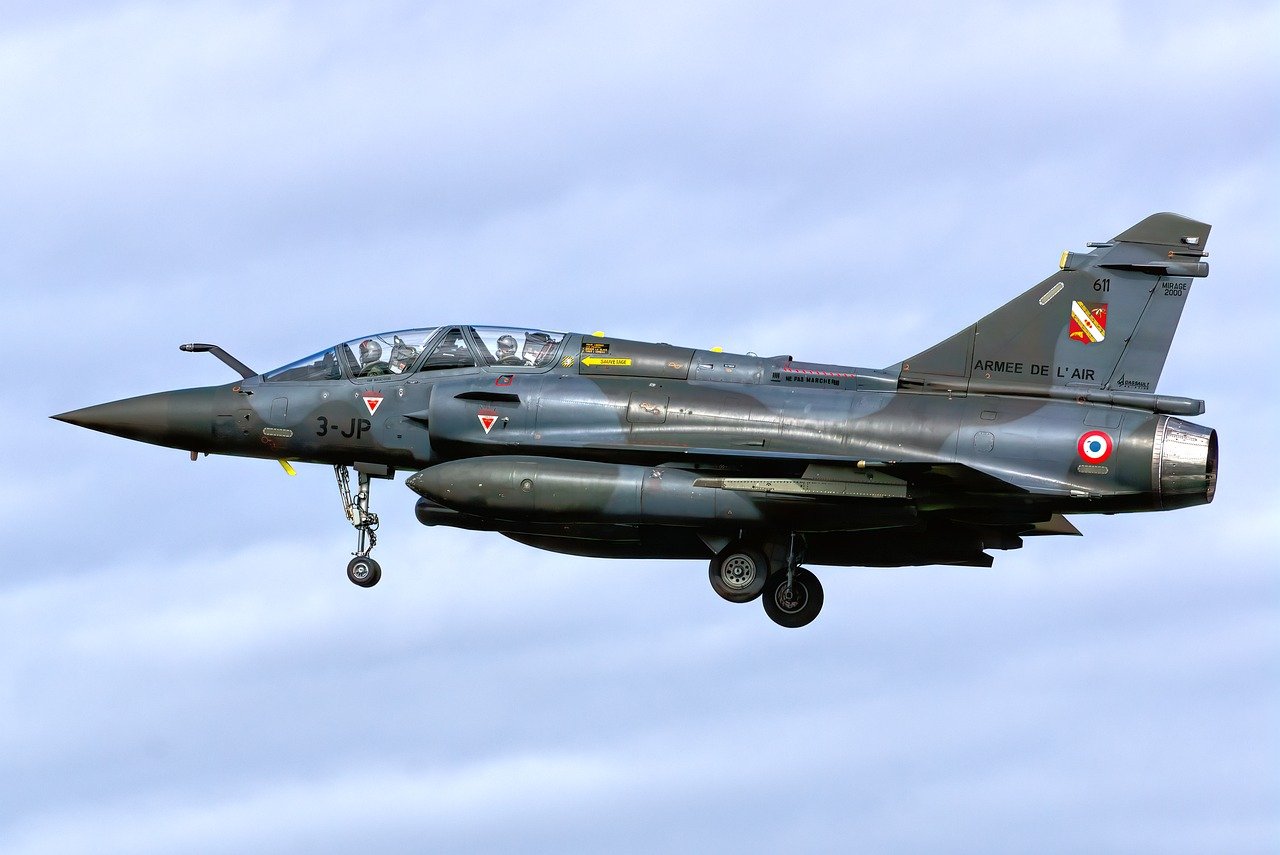
Challenges and Limitations of AI in Reconnaissance
While the integration of artificial intelligence (AI) into military reconnaissance has ushered in a new era of efficiency and effectiveness, it is not without its challenges and limitations. One of the primary concerns is the ethical implications surrounding the use of AI in warfare. As machines take on more decision-making roles, the question arises: who is responsible for the actions of an autonomous system? This dilemma becomes even more pronounced in situations where AI systems might make life-and-death decisions without human intervention.
Another significant issue is the data privacy concerns that come with AI's reliance on vast amounts of information. Military reconnaissance often involves the collection of sensitive data, and the potential for misuse or unauthorized access to this information poses a serious threat. The risk of data breaches, whether through cyberattacks or internal mishandling, can compromise not only military operations but also the safety of civilians caught in the crossfire.
Moreover, the robustness of AI systems is a critical factor. AI is only as good as the data it is trained on, and if that data is biased or incomplete, the results can lead to misinterpretations and faulty intelligence. For instance, if an AI system is trained primarily on data from one geographic region, it may struggle to accurately analyze situations in another area, leading to potentially catastrophic errors in judgment.
Additionally, the cybersecurity landscape presents another layer of complexity. AI systems are vulnerable to hacking and manipulation, which could turn these advanced technologies against their intended users. A compromised reconnaissance system could provide false information, leading to disastrous military decisions. Therefore, developing robust cybersecurity measures is not just an option; it's a necessity to safeguard these vital systems.
Lastly, the integration of AI into existing military frameworks is not a straightforward process. It requires substantial investment in technology, training, and infrastructure. Military personnel must be adequately trained to work alongside AI systems, which involves a shift in traditional roles and responsibilities. This transition can be met with resistance, as some may feel threatened by the encroachment of technology on their expertise.
In conclusion, while AI holds tremendous potential to transform military reconnaissance, it is crucial to address these challenges head-on. By fostering discussions around ethics, enhancing data security measures, ensuring the quality of training data, and investing in proper training for personnel, the military can harness the power of AI while minimizing risks and maximizing operational success.
- What are the ethical concerns associated with AI in military reconnaissance?
Ethical concerns include accountability for autonomous decisions, potential misuse of data, and the implications of machines making life-and-death choices. - How does data privacy impact military operations?
Data privacy issues can lead to unauthorized access to sensitive information, which may compromise military strategies and endanger civilian lives. - What role does cybersecurity play in AI reconnaissance?
Cybersecurity is vital to protect AI systems from hacking and manipulation, ensuring that intelligence remains accurate and reliable. - How can military personnel adapt to working with AI?
Training and education are essential to help military personnel understand and effectively collaborate with AI systems, ensuring smooth integration into existing operations.
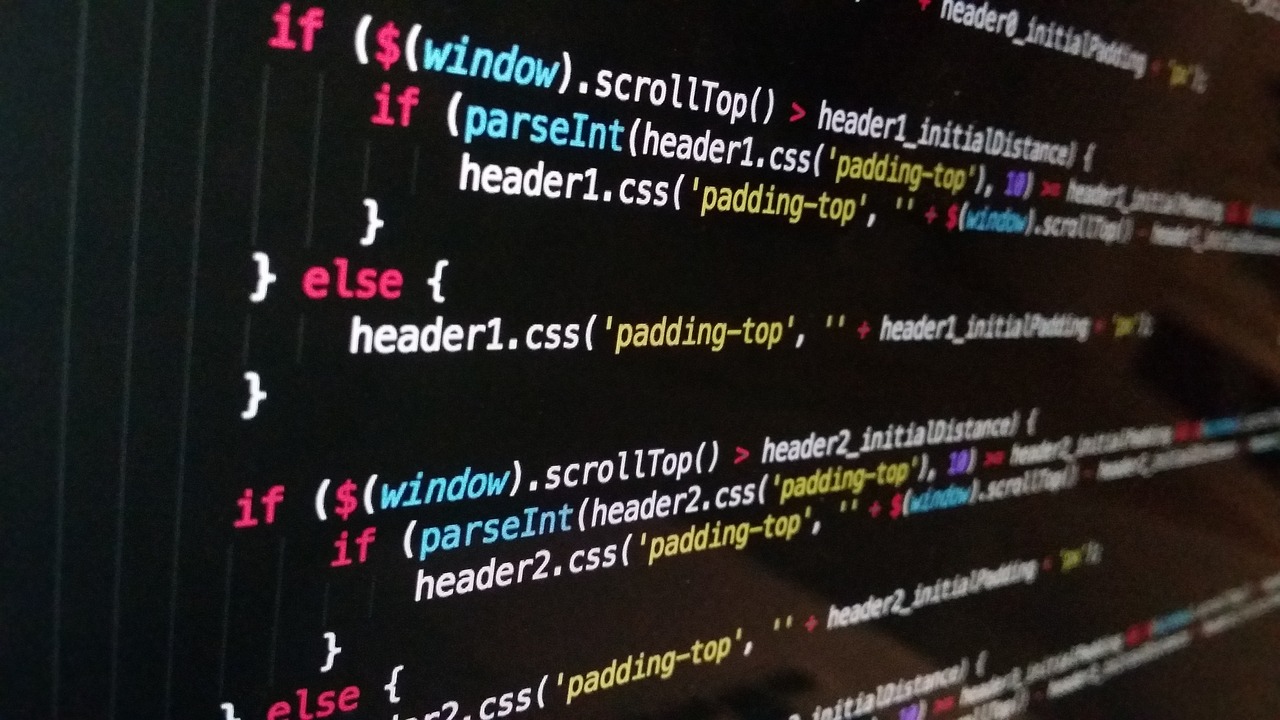
AI and Counterintelligence Operations
In the world of military operations, counterintelligence is the unsung hero, quietly working behind the scenes to protect sensitive information and thwart enemy plans. With the advent of artificial intelligence, counterintelligence operations have been transformed significantly, allowing military forces to operate with enhanced efficiency and effectiveness. Imagine trying to find a needle in a haystack; now, picture having a magnet that not only finds the needle but also predicts how it might be used against you. That's the kind of power AI brings to the table.
AI systems are designed to analyze vast amounts of data at lightning speed, sifting through information that would take human analysts weeks or even months to process. This capability is crucial in identifying patterns and detecting anomalies that could indicate potential espionage threats. For instance, AI algorithms can monitor communication channels and flag unusual activity, such as sudden spikes in data transfer or the emergence of new contacts that warrant further investigation.
One of the most exciting aspects of AI in counterintelligence is its ability to learn and adapt over time. As AI systems are exposed to more data, they refine their algorithms to improve accuracy and reduce false positives. This means that military personnel can focus their efforts on genuine threats, rather than wasting time on false alarms. Furthermore, AI can integrate data from multiple sources, including social media, satellite imagery, and intercepted communications, creating a comprehensive picture of potential risks.
However, the integration of AI into counterintelligence operations is not without its challenges. Ethical concerns arise regarding privacy and the potential for misuse of data. Military leaders must navigate these waters carefully, ensuring that the use of AI aligns with legal and ethical standards. Additionally, as AI systems become more complex, the risk of cyberattacks targeting these technologies increases, necessitating robust cybersecurity measures to protect sensitive information.
To illustrate the impact of AI on counterintelligence, consider the following table that outlines key benefits and challenges:
| Benefits | Challenges |
|---|---|
| Enhanced data analysis capabilities | Ethical concerns regarding privacy |
| Faster identification of threats | Potential for cyber vulnerabilities |
| Improved accuracy in threat detection | Dependence on data quality |
As we look to the future, the role of AI in counterintelligence operations is poised to expand even further. Collaboration between human analysts and AI systems will become increasingly vital, as the unique strengths of both can be leveraged to create a more secure environment. The combination of human intuition and AI's processing power could lead to breakthroughs in identifying and neutralizing espionage threats before they have a chance to manifest.
In conclusion, AI is not just a tool; it is a game-changer in the realm of counterintelligence. By harnessing its capabilities, military forces can stay one step ahead of potential adversaries, ensuring that sensitive information remains protected and that they can respond swiftly to emerging threats. As we embrace this technology, the importance of ethical considerations and cybersecurity cannot be overstated, reminding us that with great power comes great responsibility.
- What is counterintelligence? Counterintelligence refers to activities aimed at protecting sensitive information from espionage and intelligence threats.
- How does AI improve counterintelligence? AI enhances counterintelligence by quickly analyzing vast amounts of data, identifying patterns, and detecting anomalies that may indicate espionage.
- What are the ethical concerns surrounding AI in military operations? Ethical concerns include issues of privacy, potential misuse of data, and the need for transparency in AI decision-making processes.
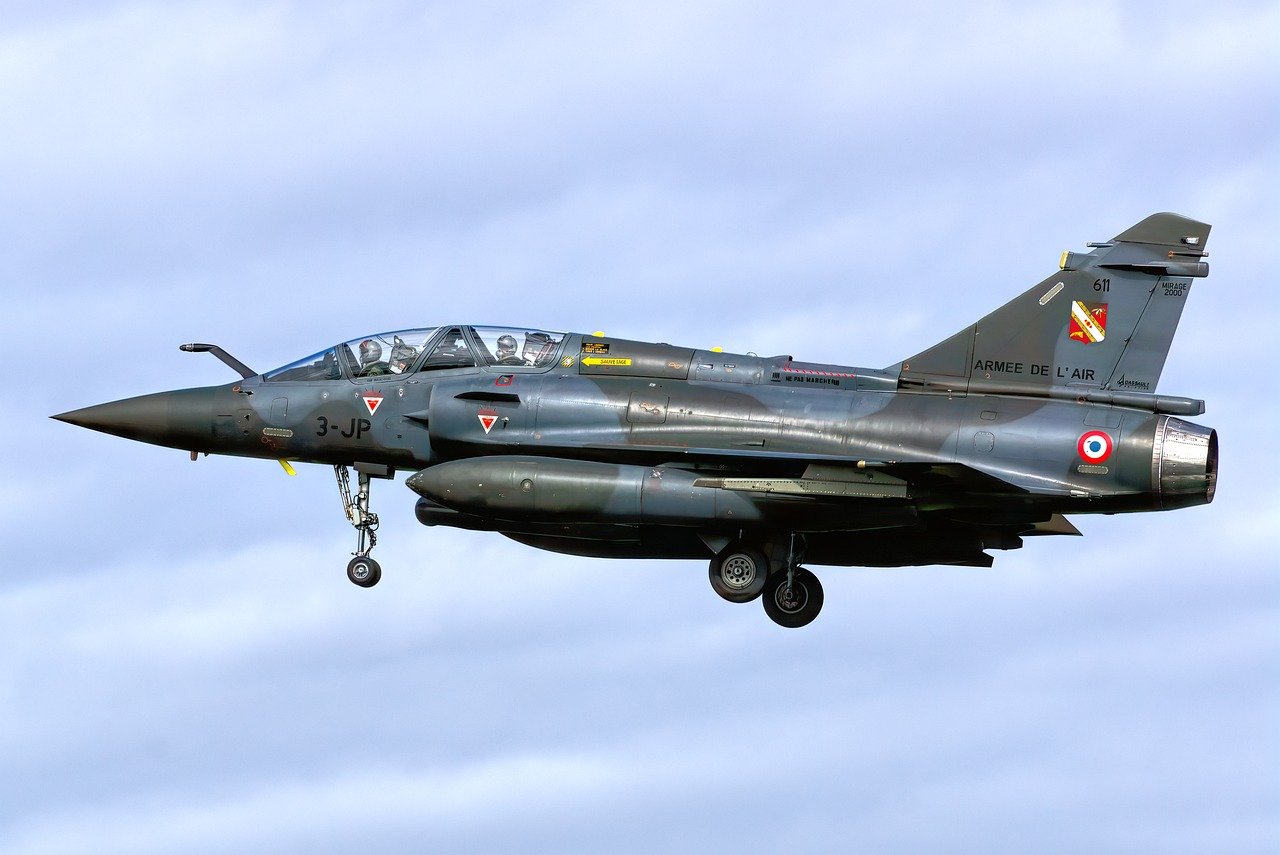
Future Trends in Military AI Reconnaissance
As we look ahead, the landscape of military reconnaissance is poised for a transformation that will redefine how armed forces operate. The integration of artificial intelligence (AI) is not just a trend; it’s becoming a fundamental aspect of modern warfare. Imagine a battlefield where decisions are made not only by human intuition but also by advanced algorithms analyzing data in real-time. This synergy between human and machine intelligence is set to enhance operational efficiency and effectiveness in unprecedented ways.
One of the most exciting trends is the collaboration between AI systems and human operatives. AI can process vast amounts of data at lightning speed, identifying patterns and anomalies that might elude human analysts. This means that military personnel can focus on strategic decision-making rather than getting bogged down in data overload. For instance, AI can sift through satellite images, weather reports, and intelligence briefs simultaneously, presenting actionable insights that allow commanders to adapt their strategies on the fly.
Moreover, the evolution of machine learning algorithms will lead to more sophisticated predictive analytics. Future AI systems will not only analyze past behaviors but will also learn from new data continuously. This capability will enable military forces to anticipate enemy movements and tactics with greater accuracy. Think of it as a chess game where your opponent's next move is predicted before they even make it. This level of foresight can be a game-changer in high-stakes environments.
Another trend is the increasing reliance on autonomous reconnaissance drones. These drones, equipped with AI, will operate independently, conducting surveillance missions while minimizing the risk to human life. They can cover vast areas quickly, providing real-time intelligence to ground forces. The future may see fleets of these drones working in coordination, sharing data with each other and with command centers, creating a dynamic and responsive reconnaissance network.
Furthermore, the integration of AI with other emerging technologies, such as the Internet of Things (IoT) and 5G networks, will enhance data connectivity and sharing. Imagine a scenario where sensors embedded in the environment provide continuous streams of data to AI systems, which then analyze and relay critical information to troops in real-time. This interconnectedness will facilitate a more agile military response, allowing forces to adapt to changing conditions on the battlefield swiftly.
However, it's essential to acknowledge the challenges that come with these advancements. Ethical considerations surrounding AI in warfare are paramount. As military forces increasingly rely on AI for decision-making, questions about accountability and the potential for unintended consequences arise. Balancing technological innovation with ethical responsibility will be crucial in shaping the future of military AI reconnaissance.
In summary, the future of military AI reconnaissance is bright and full of potential. With enhanced collaboration between humans and AI, improved predictive capabilities, and the integration of autonomous systems, the armed forces are on the brink of a new era in operational effectiveness. As we venture into this exciting future, it’s vital to navigate the challenges with care, ensuring that the technology serves to protect and empower rather than complicate the ethical landscape of warfare.
- What is the role of AI in military reconnaissance? AI enhances data collection, analysis, and operational efficiency, allowing military forces to make informed decisions quickly.
- How do predictive analytics improve military strategy? Predictive analytics use historical data to forecast enemy movements and behaviors, enabling better resource allocation and strategic planning.
- What are the ethical concerns surrounding AI in warfare? Ethical concerns include accountability for decisions made by AI, the potential for misuse, and the implications of automated warfare.
- How are autonomous drones changing reconnaissance missions? Autonomous drones conduct surveillance missions without direct human control, providing real-time data and reducing risks to personnel.
- What challenges does AI face in military applications? Challenges include data privacy issues, cybersecurity threats, and the need for robust ethical guidelines.

Case Studies of AI in Action
Artificial Intelligence (AI) has made waves in military operations, and the case studies showcasing its effectiveness in reconnaissance are nothing short of groundbreaking. One notable example can be seen in the operations conducted by the United States military in the Middle East. Here, AI systems were deployed to analyze vast amounts of intelligence data, including satellite imagery and signals intelligence. The results were astonishing; the AI algorithms could process and interpret data at a speed and accuracy that far surpassed human capabilities. This led to quicker decision-making and a more agile response to emerging threats. Imagine having a super-fast assistant that never sleeps—this is what AI brings to the table.
Another compelling case study comes from the Israeli Defense Forces (IDF), which have integrated AI into their reconnaissance missions. The IDF utilized AI-powered drones that could autonomously survey areas of interest. These drones not only captured high-resolution images but also analyzed them in real-time to detect potential enemy positions. The efficiency of these drones allowed the IDF to cover vast territories without putting human lives at risk. This autonomous capability is akin to having a trusted scout that can operate in the most dangerous terrains without fear.
Moreover, during a recent conflict, the British military employed AI systems to enhance their predictive analytics capabilities. By analyzing historical data and current battlefield conditions, the AI could forecast enemy movements with remarkable accuracy. This predictive power enabled commanders to position their forces strategically, significantly increasing operational effectiveness. The military's ability to anticipate enemy actions is like playing chess against an opponent who reveals their next moves—this advantage can be game-changing.
In addition to these examples, a collaborative project involving NATO forces is worth mentioning. They developed a unified AI platform that allowed different nations to share reconnaissance data seamlessly. This platform utilized machine learning algorithms to analyze data from various sources, providing a comprehensive view of the battlefield. The collaboration not only improved situational awareness but also fostered stronger alliances among member countries. It's like having a global network of spies who can communicate instantly, ensuring no critical information slips through the cracks.
To summarize, these case studies illustrate the transformative power of AI in military reconnaissance. From enhancing data collection to improving predictive analytics, AI is reshaping how military forces operate. The integration of AI technologies not only increases efficiency but also ensures the safety of personnel in high-risk situations. As we look to the future, the potential applications of AI in military operations appear limitless.
- What are the main benefits of using AI in military reconnaissance? AI enhances data collection speed, accuracy, and predictive capabilities, allowing for more informed decision-making.
- How does AI improve image recognition in reconnaissance? Advanced algorithms enable rapid analysis of aerial and satellite imagery, identifying threats with high precision.
- Are there ethical concerns regarding AI in military operations? Yes, challenges include data privacy, ethical implications of autonomous systems, and cybersecurity risks.
- What is the future of AI in military reconnaissance? Future trends may involve closer collaboration between humans and AI, leading to even more sophisticated reconnaissance strategies.
Frequently Asked Questions
- How does AI improve data collection in military reconnaissance?
AI enhances data collection by automating the gathering of intelligence from various sources, which drastically improves both the speed and accuracy of information. This allows military personnel to make informed decisions quickly, adapting to changing scenarios on the battlefield.
- What are the benefits of advanced image recognition technologies in reconnaissance?
Advanced image recognition technologies powered by AI allow for rapid analysis of aerial and satellite imagery. They can identify potential threats and targets with unprecedented precision, which significantly enhances operational efficiency and situational awareness for military forces.
- How does predictive analytics play a role in military strategy?
Predictive analytics enables AI systems to forecast enemy movements and behaviors. This capability allows military strategists to anticipate actions and deploy resources more effectively, which is crucial for maintaining the upper hand in real-time combat scenarios.
- What impact do autonomous drones have on reconnaissance missions?
Autonomous drones equipped with AI capabilities are revolutionizing reconnaissance by conducting surveillance without direct human control. They provide real-time data to ground forces, which is especially valuable in hostile environments where human presence may be risky.
- What challenges does AI face in military reconnaissance?
Despite its advantages, the integration of AI in military reconnaissance faces several challenges, including ethical concerns regarding the use of autonomous systems, data privacy issues, and the necessity for robust cybersecurity measures to protect sensitive information.
- How does AI assist in counterintelligence operations?
AI plays a crucial role in counterintelligence by analyzing patterns and detecting anomalies within data. This helps military forces identify and neutralize potential espionage threats more effectively, ensuring the integrity of operations and information.
- What are the future trends in military AI reconnaissance?
Future trends in military AI reconnaissance may include enhanced collaboration between human and machine intelligence. This synergy could lead to more sophisticated and efficient reconnaissance operations, improving overall effectiveness in modern warfare.
- Can you provide examples of AI successfully implemented in military reconnaissance?
Yes! There are several real-world case studies showcasing AI's effectiveness in military reconnaissance. These examples provide valuable insights into how AI has been utilized to enhance operational efficiency and inform strategic decision-making in various military contexts.


